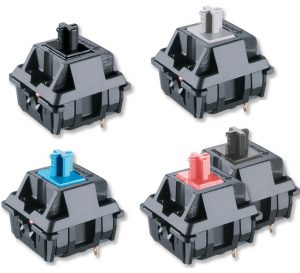The Role of a Membrane Switch in Modern Touch Interfaces and Controls
The Role of a Membrane Switch in Modern Touch Interfaces and Controls
Blog Article
Just How Membrane Layer Changes Contribute to the Toughness of Electronic Control Panels
Membrane layer buttons play an essential function in improving the durability of electronic control panels, largely with their multi-layered construction which supplies efficient defense against environmental factors such as wetness and dust. The absence of relocating parts significantly decreases the chance of mechanical failings, making membrane layer changes suitable for demanding applications.
Interpretation of Membrane Switches

Membrane switches are made to be thin and light-weight, making them suitable for applications where room is limited. They can be produced in different forms, dimensions, and shades, supplying flexibility in design that meets visual and practical demands. Additionally, membrane layer buttons can incorporate different technologies, such as tactile responses and LED indicators, enhancing user experience.
Because of their building and construction, membrane switches are often immune to dust, dampness, and general wear, adding to their longevity sought after environments. Their smooth style not only helps with simple cleansing however additionally minimizes the risk of mechanical failing, making them a favored option for suppliers seeking dependable interface in their digital control board.
Security Versus Environmental Factors
The design of membrane switches naturally offers a degree of security against different environmental aspects, which is vital for preserving capability in challenging problems - Membrane Switch. These buttons are normally built with layers of flexible materials that protect interior parts from moisture, dirt, and pollutants. By encapsulating the wiring, membrane layer switches over minimize the danger of short circuits and deterioration, which can considerably hinder efficiency
Additionally, the use of durable adhesives and sealants during manufacturing enhances their resistance to environmental difficulties. Membrane buttons can withstand direct exposure to chemicals and solvents, making them appropriate for markets such as food processing and health care, where health and cleanliness are critical. Their smooth surface layout also avoids the build-up of dust and microorganisms, facilitating easier cleaning and upkeep.
Temperature level changes are an additional environmental worry, and membrane switches are engineered to function efficiently across a vast array of temperature levels (Membrane Switch). This adaptability guarantees that control board continue to be functional in various settings, from commercial settings to consumer electronic devices
Influence On Customer Communication
Individual interaction with electronic control board is considerably influenced by the layout and capability of membrane switches. These buttons provide a responsive interface that boosts the overall user experience, permitting intuitive navigating and control. Their responsive nature makes additional reading certain that customers receive prompt responses upon activation, which is vital for jobs needing accuracy and click for more info efficiency.
Furthermore, the smooth surface of membrane layer changes promotes very easy cleaning and upkeep, promoting user self-confidence in the dependability of the user interface. This sanitation is specifically crucial in settings where health is vital, such as clinical or food handling settings. In addition, the small and light-weight layout of membrane layer switches adds to the visual appeal of control panels, urging individual interaction via a contemporary and smooth look.
Moreover, the integration of aesthetic elements, such as published symbols and backlighting, aids individuals quickly recognize functions, decreasing the learning curve linked with brand-new tools. As a result, customers can run gadgets more successfully, resulting in enhanced efficiency and satisfaction. In recap, membrane buttons play a critical role in improving user communication by combining capability, aesthetics, and simplicity of usage, eventually causing enhanced functional efficiency.
Style Versatility and Customization
Layout flexibility and personalization are necessary aspects of membrane layer switches, making it possible for producers to customize electronic control panels to certain applications and customer demands. This flexibility allows for the combination of different design elements, such as colors, graphics, and appearances, which can enhance the visual appeal and individual interaction of the control board.
Membrane layer buttons can be customized in shapes and size, fitting a variety of tools and applications, from commercial machinery navigate to this site to consumer electronics. This flexibility makes sure that manufacturers can create intuitive interfaces that align with user assumptions and functional demands. Additionally, the ability to incorporate one-of-a-kind features such as backlighting or tactile responses additionally enhances functionality, permitting a much more interactive experience.
In addition, the manufacturing procedure for membrane layer switches over supports the quick prototyping of designs, enabling producers to repeat and improve their principles swiftly. This ability not just increases the growth timeline however additionally makes sure that the end product fulfills details practical and aesthetic standards.

Cost-Effectiveness and Longevity
Cost-effectiveness and longevity are considerable benefits of membrane layer buttons, making them an attractive alternative for makers and end-users alike. These buttons are usually cheaper to produce than typical mechanical switches, primarily as a result of their simplified production procedures and the lowered number of parts called for. This expense benefit prolongs not only to preliminary manufacturing but also to lasting operational expenses, as membrane layer buttons typically require much less maintenance and have a reduced failure rate.
In addition, the long life of membrane changes adds to their overall value. Created from sturdy products, they are immune to ecological aspects such as wetness, dirt, and chemicals, which can cause premature wear in various other button types. The absence of moving parts minimizes mechanical failure, enabling membrane layer switches over to keep functionality over expanded periods.
This durability is especially beneficial in applications calling for constant efficiency under demanding problems, such as medical gadgets and commercial equipment. Inevitably, the mix of cost-effectiveness and longevity makes membrane layer switches a financially feasible choice for producers, supplying dependable options that stand up to the test of time while optimizing financial considerations.
Verdict
In verdict, membrane layer buttons significantly enhance the longevity of digital control panels via their durable building and protective functions - Membrane Switch. On the whole, membrane layer switches stand for a reliable and economical choice for enhancing the durability and performance of digital control systems.
Report this page